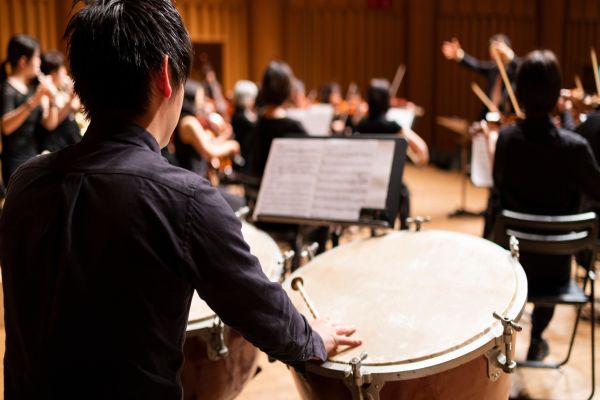Considered a child prodigy, Claudio Monteverdi produced his first music for publication, around the age of fifteen—some motets and sacred madrigals—the major genre of Italian secular music in the sixteenth century. At the age of twenty, he composed his first book of secular madrigals
Born in Italy in 1567, Monteverdi is rated as one of the most important composers in the history of Western classical music. His revolutionary innovations have influenced 20th century composers, and he bestrode the Renaissance and Baroque musical eras. Monteverdi is credited with the distinction of being the first composer to develop opera to its full dramatic and musical potential. The path from the earliest canzonettas and madrigals to his operatic work illustrates the shifts in music that occurred in the last decades of the 16th century and the first few of the 17th. He also did much to bring a modern secular spirit into church music.
During his long life, Monteverdi produced eight books of madrigals and forty operas, which can be classified in both old and new categories. He introduced the Baroque method of declamation with continuo accompaniment, and enriched it with an unprecedented expressiveness, and emerged as one of the most significant innovators. His later madrigals were revolutionary in that they were arranged in parts for voices or instruments; La Favola d’Orfeo is regarded as the earliest dramatically viable opera. If the madrigals of that time gave him a reputation well outside northern Italy, it was his first opera, Orfeo, performed when he was 40, that ultimately cemented his place as a composer of large-scale music rather than of exquisite miniature works.
La Favola d’Orfeo (excerpt)
At the age of 41, despite being depressed on account of his wife’s death, Monteverdi produced his next successful opera, L’Arianna. Unfortunately all but one number, were lost, the one being preserved being the Lament (Lamento); this was written in a recitative style, and was acknowledged during that century as a pioneering piece of expressive monody, moving the audience to tears.
When Monteverdi was 43 years, he created what is considered his greatest piece, Vespro della Beata Vergine (The Vespers of the Blessed Virgin). This was one of his few sacred works of any scale, but it remains to this day one of the best examples of devotional music.
Vespro della Beata Vergine (excerpt)
There are other music aficionados who believe that Monteverdi’s last opera, The Coronation of Poppea may have been his best, with its slow, unfolding narrative rich in subtleties, which ironically celebrates a triumph of evil over good with beautiful music. Even Monteverdi’s cynicism seems modern, though he was most likely depicting his own surroundings in 17th century Italy.
At the age of 46, Montervedi became the director of music of St. Mark’s, as the musical establishment of St. Mark’s was in need of an experienced director after some years of decline. Within a few years, he revitalized the music in the basilica although he wasn’t primarily a church musician.
While Montervedi was in his 50s, he continued his attempt to create a practical philosophy of music resulting in further stylistic innovations. He divided the emotions into three basic kinds: love, war, and calmness, based on the ideas of Plato; each of them being expressed by differing rhythms and harmonies. ‘Another element in his compositions was a candid acceptance of realism—the imitating of the sounds of nature in various ways. All these ideas are to be found in his dramatic cantata, The Combat of Tancredi and Clorinda, a setting of a section of Tasso’s Gerusalemme liberata. In this work, the rapid reiteration of single notes in strict rhythms and the use of pizzicato—plucking strings—to express the clashing of swords show important steps forward in the idiomatic use of stringed instruments.’
Though Monteverdi composed around 40 operas, only L’Orfeo, L’incoronazione di Poppea, Il ritorno, and the famous aria Lamento from his second opera L’Arianna have survived. But his legacy has had a great bearing for posterity, because he was known to display a strong and exciting temperament, having ‘fire in his blood,’ his music full of excitement, lavishing harmonies and exuberant tempos. While he was termed as a ‘modern’ composer, he also knew how to ‘pay respect’ to the older generation and their traditional principles.
Lamento d’Arianna
He was regarded as a true musical maestro because of his capacity to blend vastly different styles and employ his wizardry in unifying them, while still maintaining their individual characteristics. For example Monteverdi published two completely different pieces in the same collection—Missa in illo tempore and Vespro della Beata Vergine.
Monteverdi came to be known as the ‘Opera’s Prophet’ being the first composer who wrote operas fully aware of the artistic potential of this musico-dramatic genre. He was the first to exploit the potential of the orchestra in an opera, recognising that wind instruments and percussion were good for projecting military moods, flutes for pastoral scenes, and violas and lutes for sentimental episodes. No composer before him had used these tools for mood painting and characterisation. He used rhythm, discords, instrumental colours, and key changes to project dramatic action, interpret characters or project moods and emotions in a way unknown before or during his time.
Monteverdi died at the age of 76 in Venice and was buried in a vast Gothic basilica, the Frari, in a tomb at the centre of the church near the Venetian painter, Titian.



